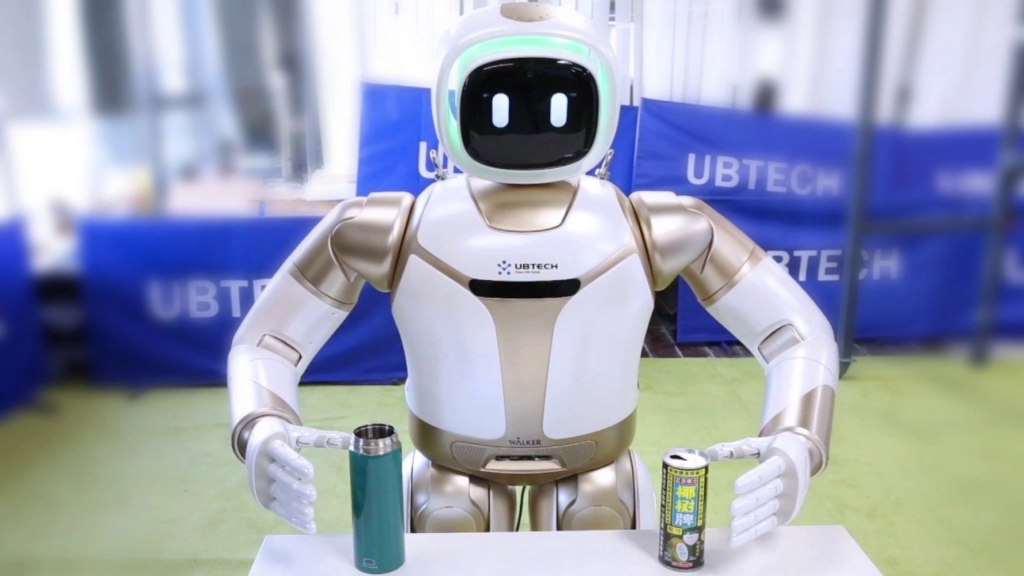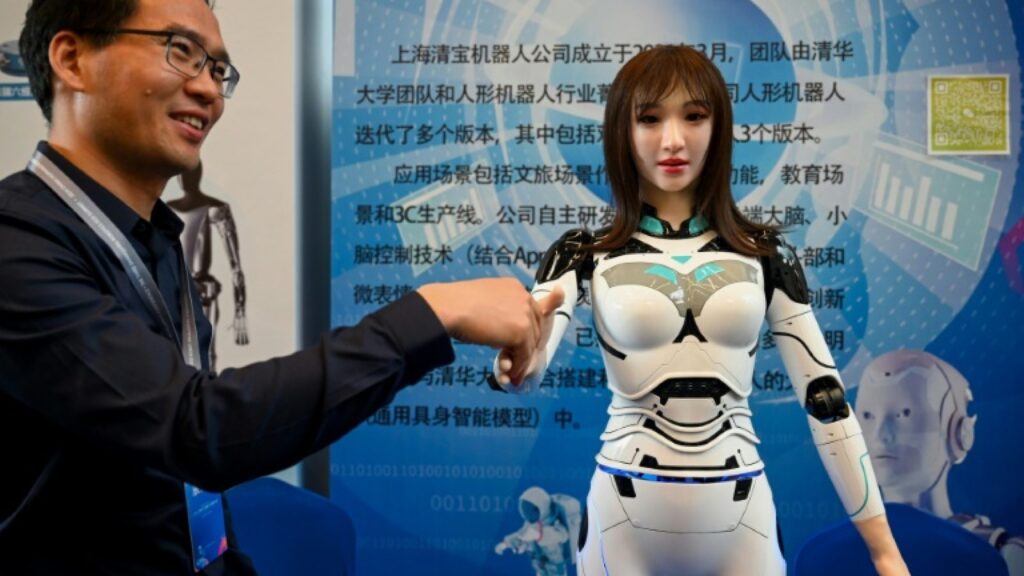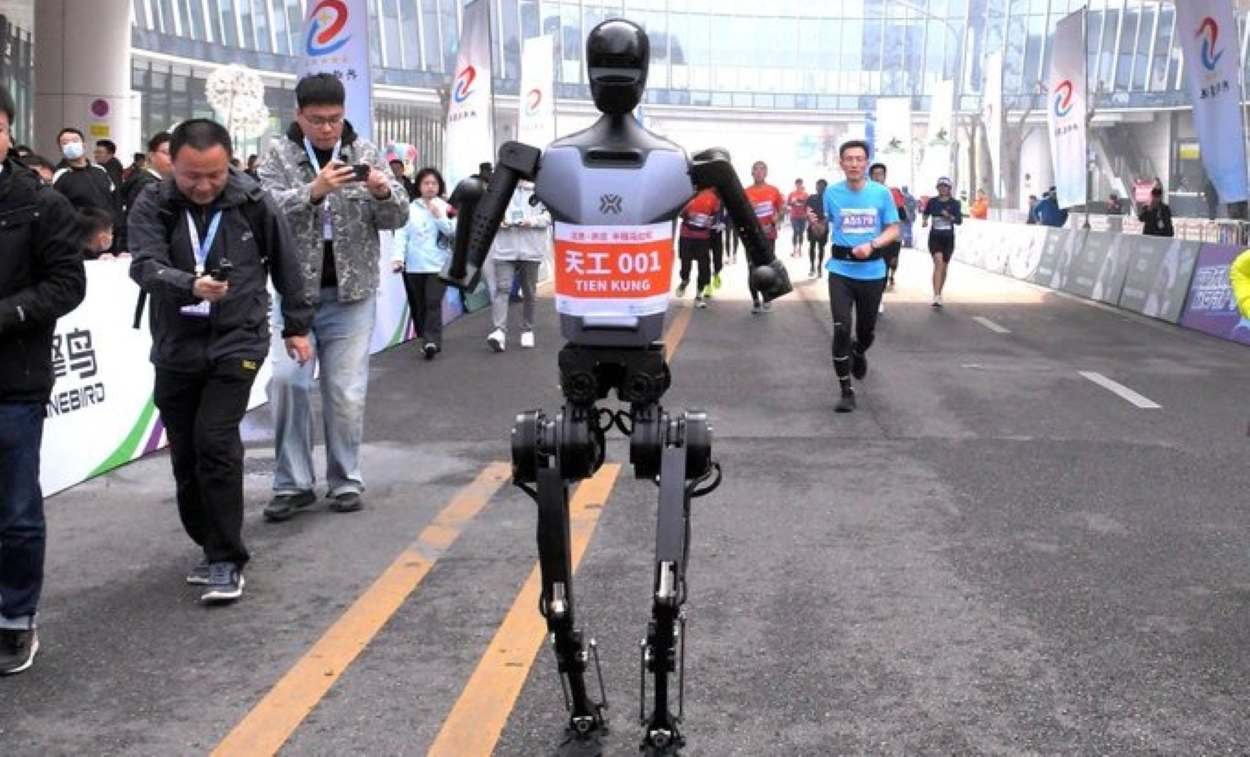China is set to make history this spring by hosting a unique First Human-Robot Marathon event that will bring humans and robots together on the same starting line. Scheduled to take place in Beijing’s Daxing district, this half-marathon will feature humanoid robots racing alongside 12,000 human athletes over a 21-kilometer course.
The event, as reported by the South China Morning Post, represents a significant milestone in the integration of artificial intelligence (AI) and robotics into everyday life. The marathon underscores China’s dedication to advancing technology and robotics, aligning with its strategic goals in the global tech competition.
A Landmark Event in Human-Robot Interaction
The marathon is organized by the Beijing Economic-Technological Development Area, commonly known as E-Town. It will feature robots developed by over 20 companies, as well as entries from robotics clubs, research institutes, and universities worldwide. This groundbreaking initiative emphasizes collaboration between nations and industries in the field of robotics.
To qualify for the race, participating robots must meet strict criteria. They need to resemble humans in appearance and possess a mechanical structure enabling them to walk or run bipedally.
Robots using wheels or other alternative mobility systems are not eligible. Additional specifications include a height range of 0.5 to 2 meters and a minimum hip-to-sole extension distance of 0.45 meters. Both remote-controlled and fully autonomous robots are permitted to participate, with the option to replace batteries during the race.
Read : Pigeons, Cats, Whales, Robotic Catfish: Which Proved as the Most Effective Spy in History?
The marathon reflects a broader vision of integrating AI and robotics into everyday scenarios. By organizing such a high-profile event, China aims to showcase the capabilities of humanoid robots in dynamic and challenging environments.
Read : Robot Throws Itself Down the Stairs in South Korea: First Robot Suicide Case in the World
It is not merely a demonstration of technological prowess but also an opportunity to explore practical applications and limitations of robotics in real-world conditions.
China’s Growing Robotics Industry
The half-marathon highlights China’s rapid progress in the robotics sector, a cornerstone of its technological ambitions. According to the International Federation of Robotics, China accounted for over half of the world’s robot installations in 2023, totaling 276,288 units.
These figures reflect the country’s strategic emphasis on robotics as a solution to various socio-economic challenges, including a shrinking workforce and the need for advanced manufacturing solutions.
China’s commitment to the robotics sector extends beyond competitive events. The country is actively deploying robots in caregiving, particularly to support its aging population.

Robots are being used for health monitoring, emotional companionship, and intelligent household services. In industrial settings, robotic applications are revolutionizing factory operations, increasing efficiency, and reducing dependency on human labor.
Efforts to promote the robotics industry are evident in local initiatives like Nanjing’s 2024-2026 plan for high-quality robotics development. The city aims to position itself as a hub for cutting-edge robotics technologies.
By 2030, the nation’s robotics industry is projected to reach an estimated value of 400 billion yuan, according to state news agency Xinhua. These developments underline the role of robotics as a key pillar of China’s long-term economic and technological strategy.
Implications for the Future
The upcoming human-robot marathon is more than just a race; it symbolizes a paradigm shift in how humans and machines interact. By bringing humanoid robots into a traditionally human domain, China is fostering a deeper understanding of robotics’ capabilities and potential. This event could pave the way for innovations in robot design, mobility, and endurance.
Moreover, the marathon raises important questions about the role of AI and robotics in society. The collaboration between humans and machines in such a public and competitive setting could influence public perceptions and acceptance of robotics.

It also provides an opportunity for developers to test and refine their technologies under real-world conditions, contributing to advancements that may benefit industries ranging from healthcare to manufacturing.
The event’s success could inspire similar initiatives worldwide, encouraging other countries to explore creative ways of integrating robotics into mainstream activities.
As nations compete to lead in AI and robotics, such events can serve as platforms for collaboration and exchange of ideas, accelerating global progress in these transformative technologies.
China’s decision to host the world’s first human-robot marathon is a testament to its vision for a future where technology and humanity coexist harmoniously.
By pushing the boundaries of what robots can achieve, the nation is setting a benchmark for innovation and inspiring others to rethink the possibilities of human-machine collaboration.
let’s enjoy few years on earth with peace and happiness….✍🏼🙏

